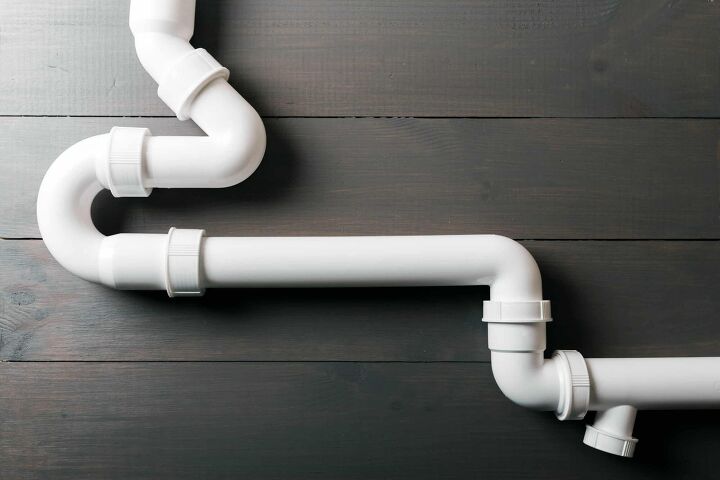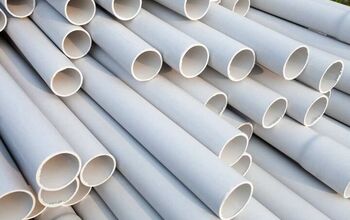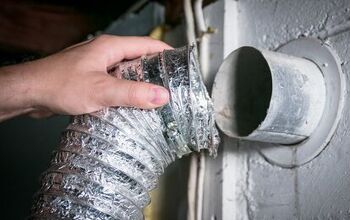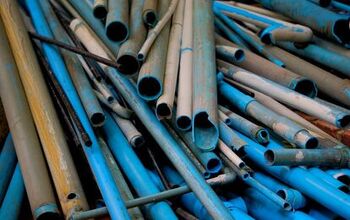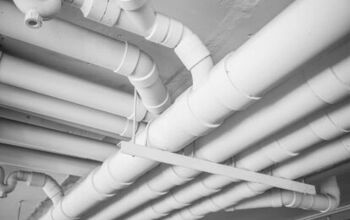Can You Use PVC In The Attic? (Find Out Now!)

If there’s one thing that reading up on DIY manuals has taught me, it’s the importance of choosing the right materials for the job. When it comes to containing water or protecting electric wirings, the importance becomes a main issue. Most people don’t realize it, but using certain materials in your attic can be a major safety hazard. For example, PVC can be an eyebrow-raiser in many situations…
The high temperatures that attics can reach may make PVC a potentially hazardous material. If you are using PVC in your attic, it should only be used to transport cold water. Electrical housing and hot water transport can potentially cause the PVC to decay, releasing dioxins into the atmosphere.
Though we use PVC for a wide range of different projects, it’s still made of ingredients that can turn toxic if heated up. If you were thinking of using PVC for a project in your hottest room, think twice. This article will explain to you why it’s usually a bad idea.
Is Using PVC In Your Attic Dangerous?
PVC is a thermoplastic. This means that it will bend and warp based on heat levels. Before it actually melts or bends, PVC starts to degrade in heat. During degradation, this material releases chemicals—some of which are notably toxic in nature. The most toxic chemical that’s released is dioxin, which can lead to cancer, neurological damage, rashes, and birth defects.
The maximum safe temperature for PVC to reach before degradation is 140 degrees Fahrenheit. Attics can easily reach 100 degrees in most parts of the country. If not given additional temperature control, many homes might see attic temperatures close to the maximum safe temperature, or worse, higher.
What Else Can Happen If You Use PVC In A Hot Room?
Another issue that most PVC piping has is its expansion tendencies. PVC can expand up to 3.6 inches for every 100 feet of piping in a room above 100 degrees Fahrenheit. This might not seem like much, but when you’re dealing with water piping, expansion quickly becomes a liability.
Depending on how bad the expansion gets, it’s possible to develop a leak as a result of high heats. This is one of the many reasons why some builders prefer to use other materials for water pipes in hot areas. It is a good way to reduce the risk of having leaks or having to reinforce the piping around your home.
Is It Ever Safe To Use PVC In An Attic?
Generally speaking, you should never use PVC in areas prone to high heats. Many local building codes bar people from using PVC piping inside an attic due to the high temperatures they can reach. In areas like Florida and New Mexico, PVC piping should be completely out of the question due to the high risk of having attic temperatures exceed 140 degrees.
However, if you live in a state where attic ambient temperatures don’t get that high, you might be able to use PVC in your attic. The general consensus is that you can use it to shield wiring and as a cold water conduit in colder climates without worry.
How To Make Sure You Stay Safe While Using PVC For Your Attic
The best way to ensure that you stay safe while you’re working on fixtures in the attic is to follow these safety tips:
- Choose PVC that’s specially graded for attic use. Some PVC fixtures are meant to be used in attics, and will be made with heat-resistant additives for that purpose.
- If you aren’t sure if you should use that PVC, check the heat grade. Most PVC piping will have a maximum heat use of 140 degrees, but there are some that are meant to be heat-resistant. These tend to be better suited for your attic.
- Check your local building laws. Some areas bar the use of PVC for areas that are linked to high heat, such as attics and boiler rooms. If you use PVC piping in an area where it’s barred, your building might fail inspection.
- Stick to using it as a cool water conduit or air vent. The idea behind this rule is to avoid using the piping or PVC material to come into contact with items that could reach a high heat.
- Don’t use PVC in any room that has a tendency of getting too hot. If you live in a state that is known for hot temperatures and has an attic that has no temperature controls, you should avoid using PVC piping.
- If you live in a state that regularly suffers from heatwaves, look for PVC alternatives for your attic’s use. Attics can retain heat remarkably well. In the winter, that’s great, but in summer, that can turn your PVC piping into a serious problem.
Is It Against Building Codes To Use PVC Piping In Your Attic?
This all depends on where you live. In many states in the South, PVC piping is outright banned as a material for plumbing. Many local municipalities located in hotter climates may also ban is due to its potentially toxic fumes. In some areas, the ban is only relegated to basements and boiler rooms.
If you’re worried about this issue, chances are you have a right to be concerned. To find out where your local city and state mandates stand, refer to your local building codes or ask some questions at your local city hall. It’s better to check before you start working rather than find out halfway through your project.
Is PVC Usage A Fire Hazard?
PVC tends to melt before it catches fire, and in most cases, won’t cause a fire. However, if it’s lit, you can expect to have the PVC emit a thick black smoke. The current standard guides on PVC safety rank PVC as a combustible material, so it really has no business being in an area where exceedingly high temperatures are common.
Related Questions
Is PVC piping bad for you?
PVC piping is not marked as an immediate threat to human health, but it definitely does have evidence to suggest it’s toxic. PVC can contain dioxins and other cancer-causing agents that could make it a risk to both people and animals. In areas where PVC is produced, higher concentrations of carcinogens have been found in environmental markers.
What’s the best material for drinking water piping?
The best and safest material for your drinking water to travel through is copper pipes connected through lead-free joints. This minimizes the risk of lead poisoning and reduces your chance of getting exposed to carcinogens.
How long can PVC piping last?
Despite its cheap appearance, PVC piping is fairly durable. Most pipes will last between 25 to 40 years, assuming that you aren’t abusing them. Regular maintenance, using the right cleaning agents, and keeping them away from harm’s reach can all help.
Is PVC piping safe for your drinking water?
PVC piping can be great for a lot of things, but drinking water is not one of them. Though the jury is still out on this one, the general consensus is that you should avoid using PVC piping to carry water that you may eventually drink. The reason why is simple. Any degradation could potentially taint the water supply.

Ossiana Tepfenhart is an expert writer, focusing on interior design and general home tips. Writing is her life, and it's what she does best. Her interests include art and real estate investments.
More by Ossiana Tepfenhart



